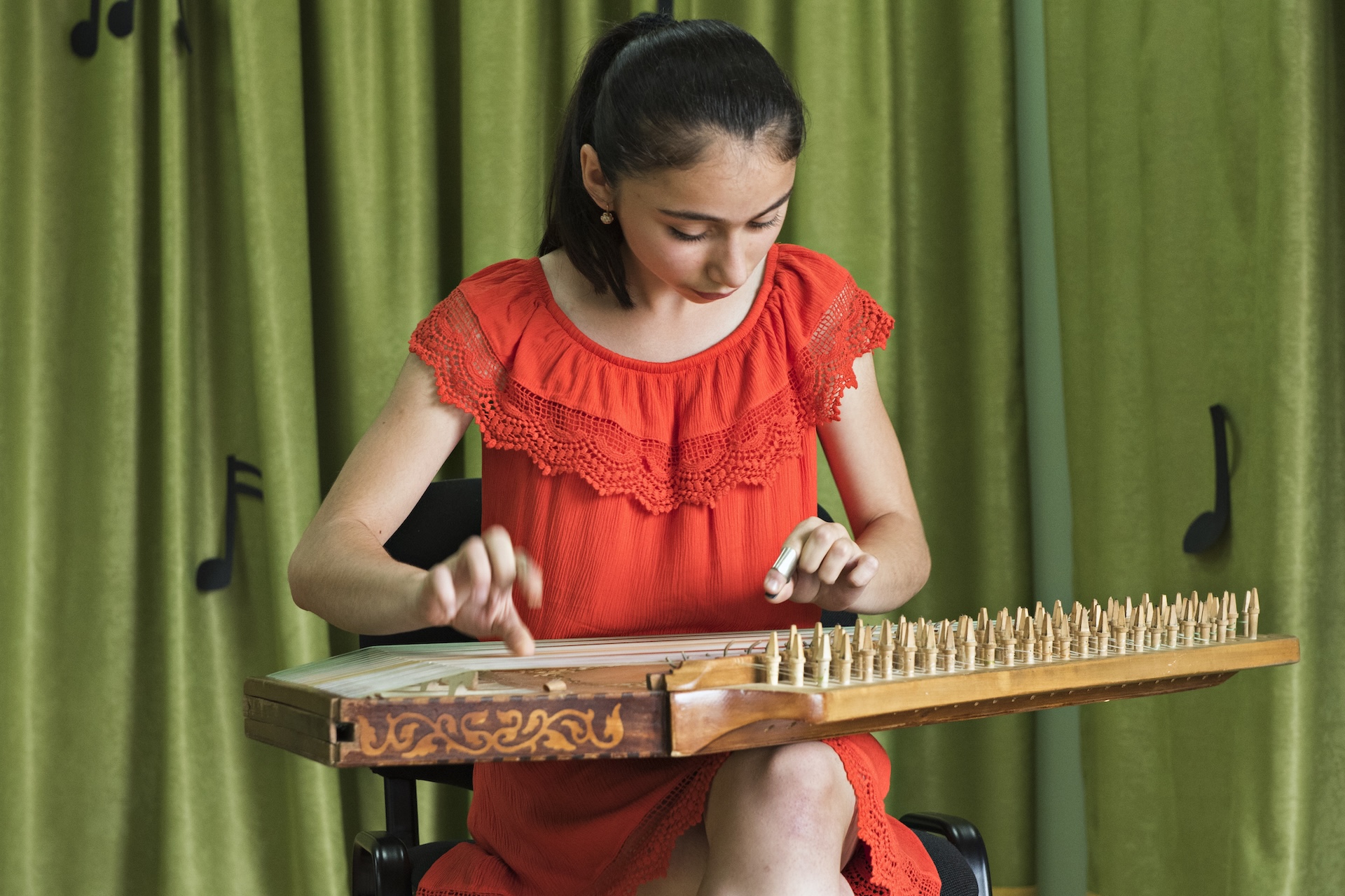
While the kanun, an instrument belonging to the zither family, is not exclusive to Armenia, it has been played in the country since ancient times.
The metal rings attached to the index fingers of this young girl hold small plates that allow her to pluck the strings. This demanding skill is mastered with virtuosity by the young virtuoso Narek Kazazyan. Many Armenians play an instrument, whether as amateurs or professionals. The free access to music schools during the Soviet era is likely to have contributed to this enthusiasm.
Like the kanun, several instruments played in Armenia are unique to this region of the world. Examples include the parkapzuk, comparable to the bagpipe, the blul, a type of flute, and the dhol, akin to a drum. However, the most iconic is undoubtedly the duduk, a wind instrument from the oboe family. With its soft, velvety tone and rather low pitch range, it transports listeners straight to the heart of Armenian history and landscapes from the very first notes. Surprisingly, Azerbaijan’s control over Nagorno-Karabakh has had a direct impact on musicians who play the duduk. This is because the reeds used in duduks are made from cane, some of which used to come from this region. Alternative sources must now be found.
In addition to instrumental practice, singing also holds a significant place in Armenian culture. Several thousand traditional songs were patiently collected in the early 20th century by the monk and musicologist Komitas, who travelled across the country to transcribe them methodically. Among his recordings are some traditional songs from Nagorno-Karabakh, particularly those accompanying farm work.